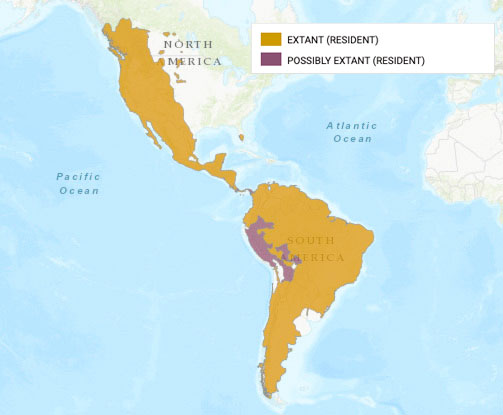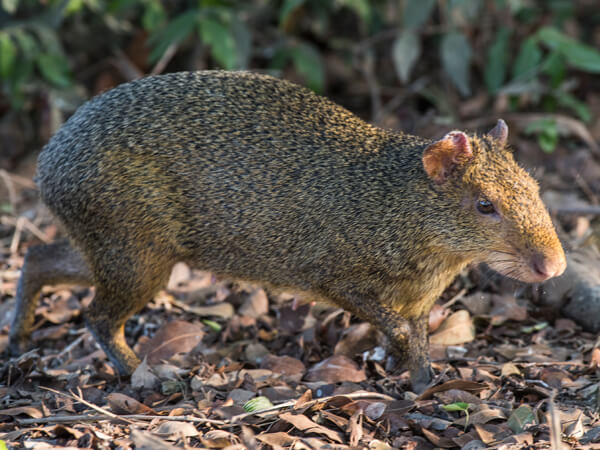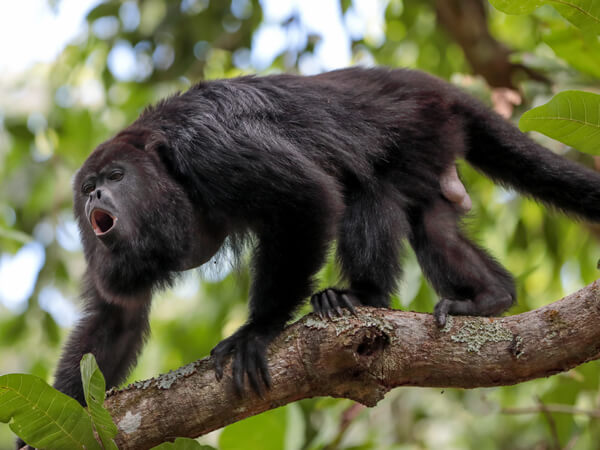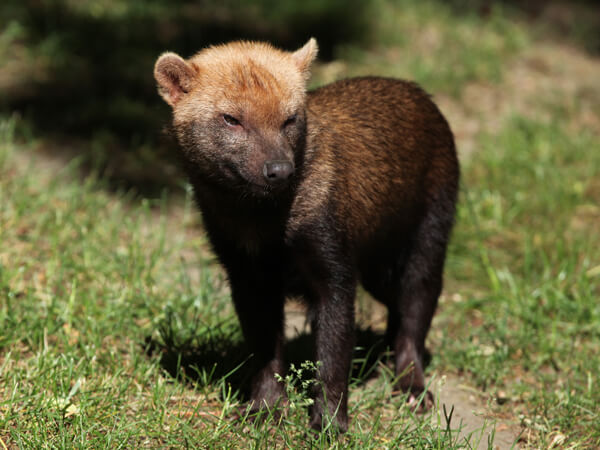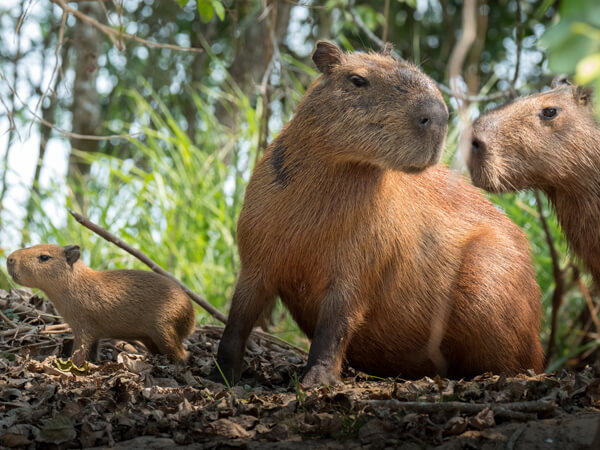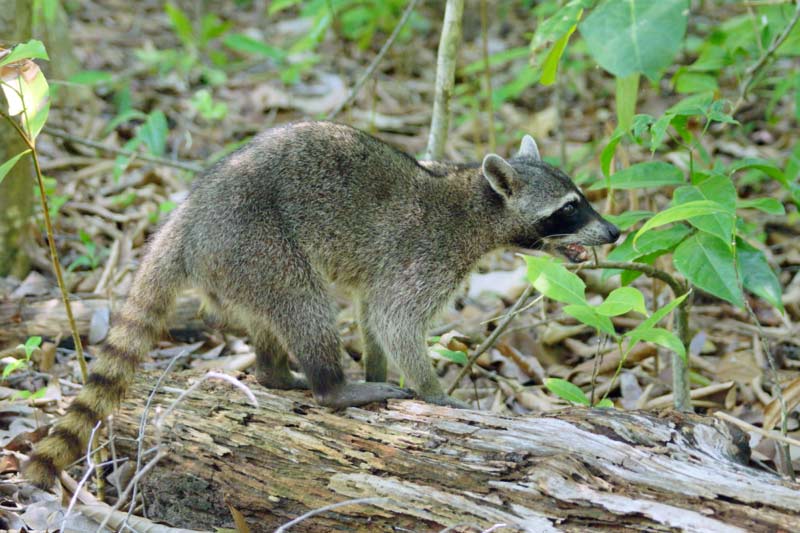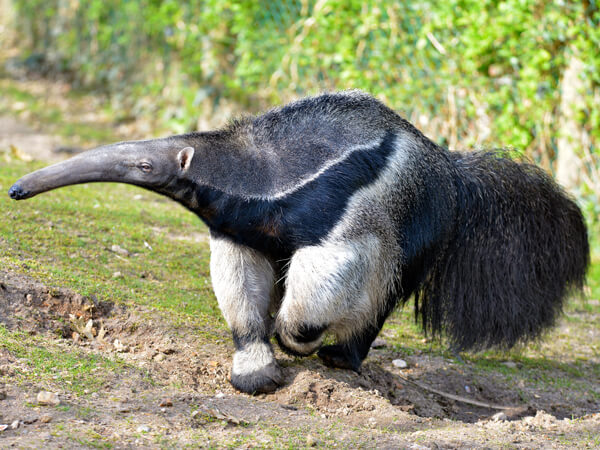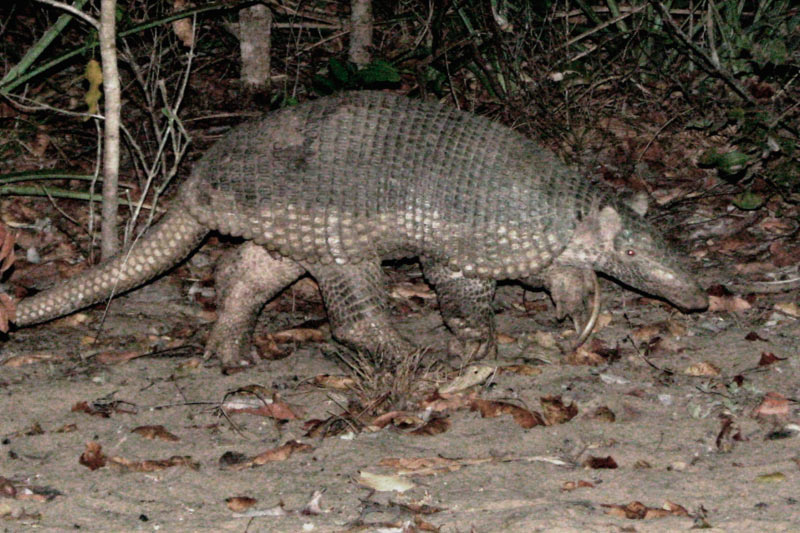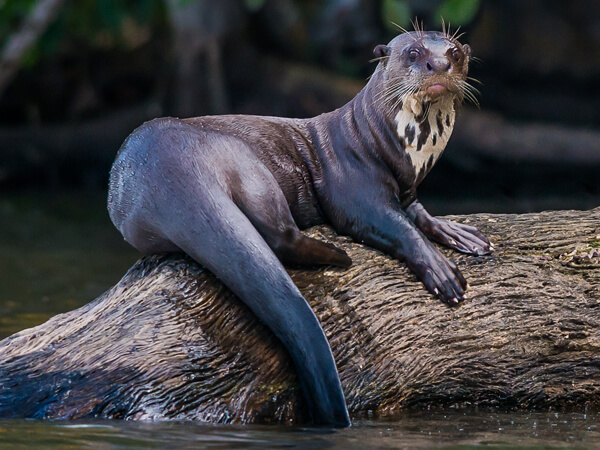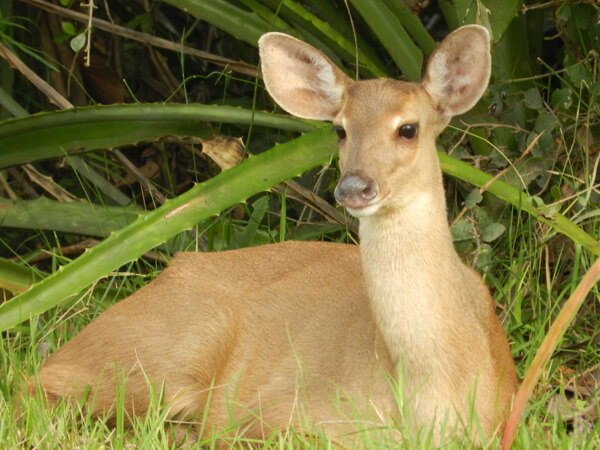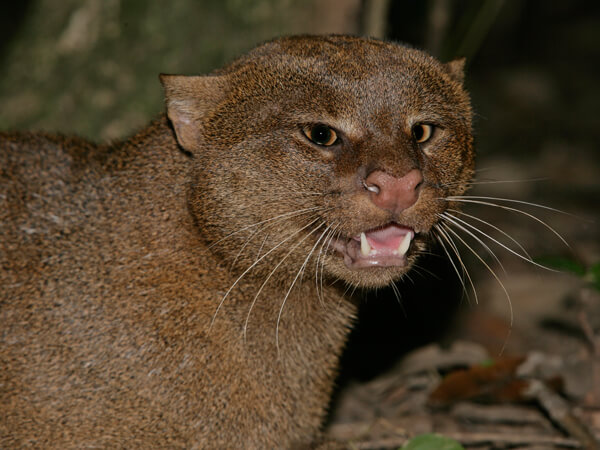The puma is the second largest cat in the Americas. This cat, thanks to its high adaptability, is present in various biomes from the north to the south of the continent, able to live in both dense forests and in the outskirts of urban areas.
Click to learn more
Distribution
The puma is the terrestrial species with the widest geographical distribution in the Americas, occurring from Canada to Chile, including all of Brazil. It is one of the most well adapted cats in the new world, able to dwell in various types of environments throughout the continent.
Features
The puma can measure up to 1.5 meters (excluding the tail) and weigh between 53 and 72 kilograms, although there are records of males weighing over 110 kilograms. The species varies in weight and size distribution. Populations of the extremes of the continent (Chile and Canada) contain larger and more robust animals, weighing 75 kilograms on average. The pumas found in tropical populations, on the other hand, tend to be smaller, weighing approximately 50 kilograms. Their coat color varies from light gray to brown-red. After the jaguar, it is the second largest cat in the Americas.
Behavior
Pumas, like most cats, are both crepuscular and nocturnal animals. They are more active in the late afternoon and overnight. They are solitary, opportunistic animals, taking advantage of any chance to feed.
Food
The puma is a strictly carnivorous predator. However, the species has one of the most wide-ranging appetites among the cats, and, in the absence of large prey, pumas will eat a variety of animals including lizards, birds and insects.
The puma’s slaughter tactics are different from those of the jaguar. It usually kills by biting the neck of the victims, thereby choking them. In most cases, they begin to eat around the area of the ribs and belly (visceral) and when they are satisfied, they hide the carcass with leaves, earth, and branches to return to feed on again the next day.
Reproduction
The gestation period varies between 82 and 98 days, after which the puma may give birth to between one and six cubs, usually giving birth to three per litter. The cubs are born weighing approximately 400 grams each with spots on their coat, in a different pattern to that found in the more uniform color of the adults. The spots remain until four months of age, and then begin to fade.
Mothers care for their young for the first year, after which point they become independent and start to seek their own territory.
Conservation
Considered “vulnerable” according to the national list of the ICMBio, and “low concern” by the IUCN, the species is suffering a population decline due to different factors such as: sport or preventative hunting; hunting for retaliation against the predation of domestic animals; habitat loss and fragmentation; and road kill.

